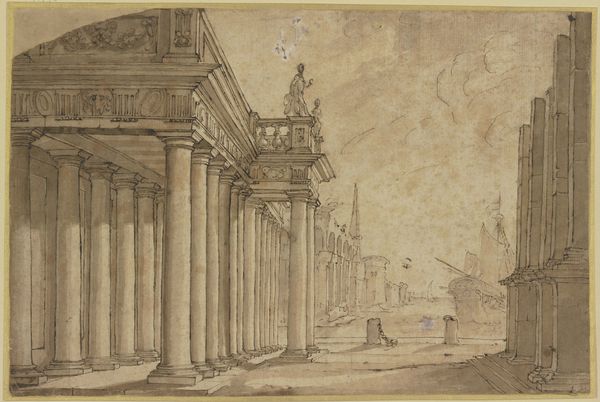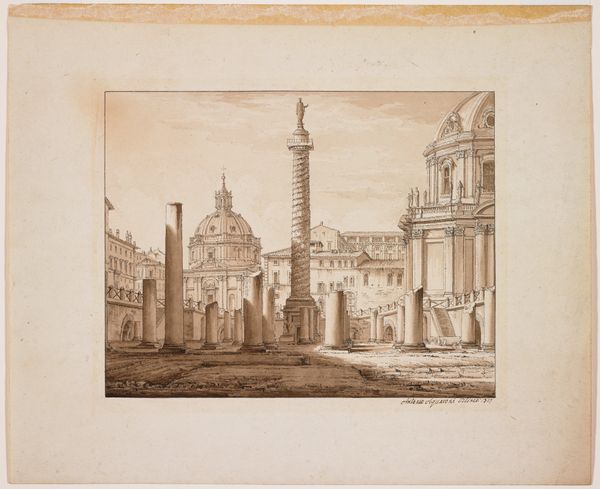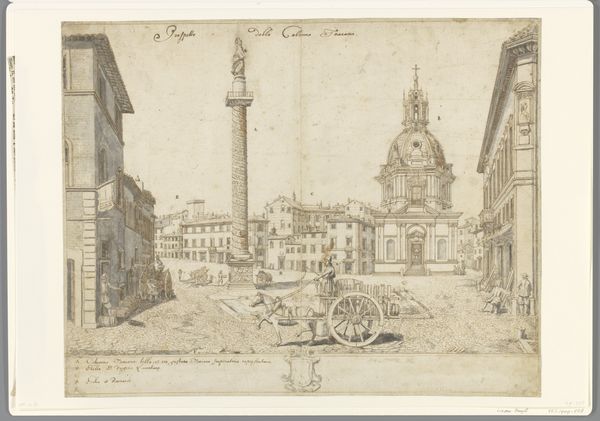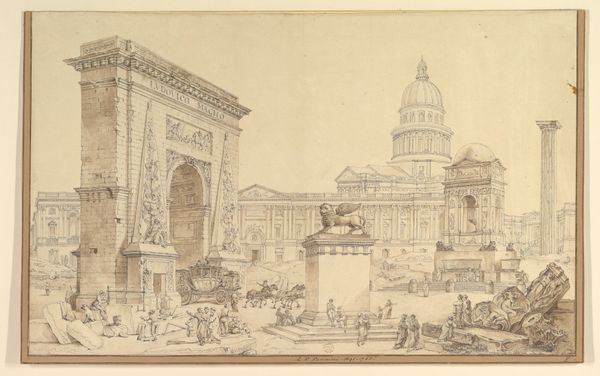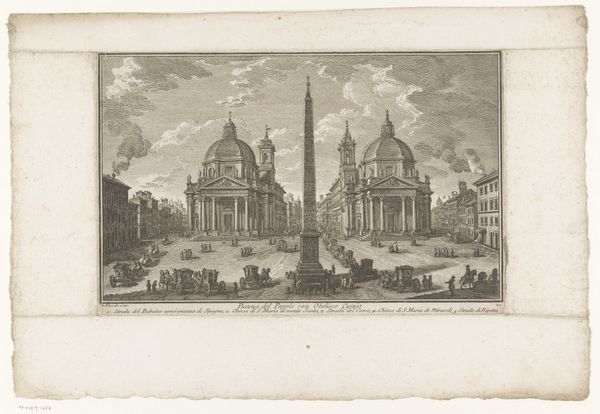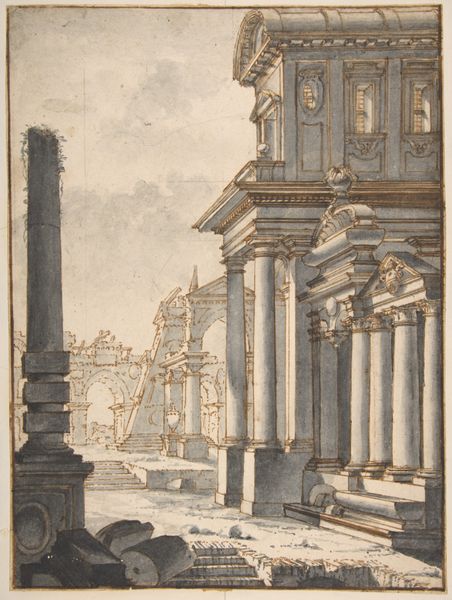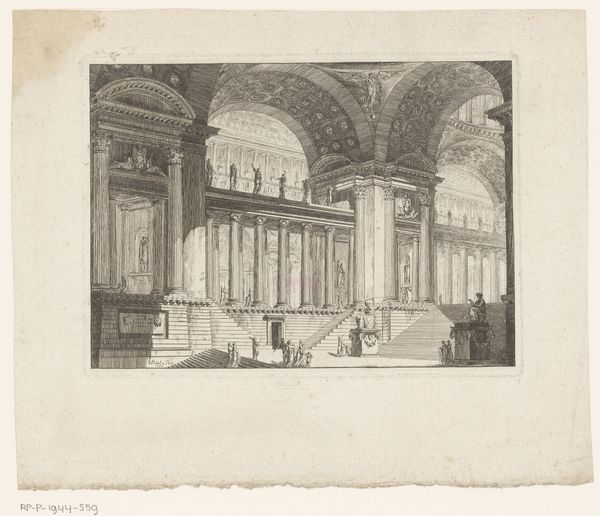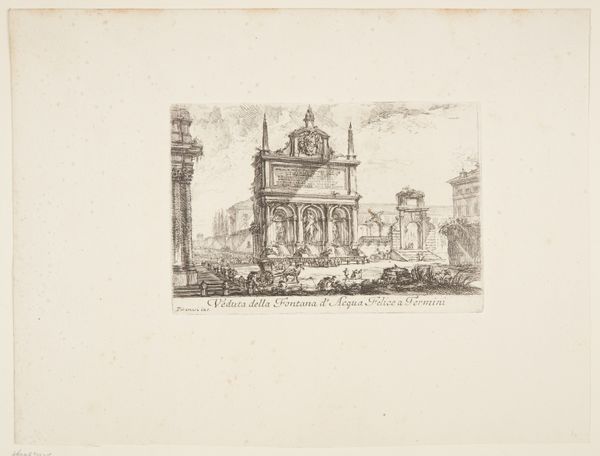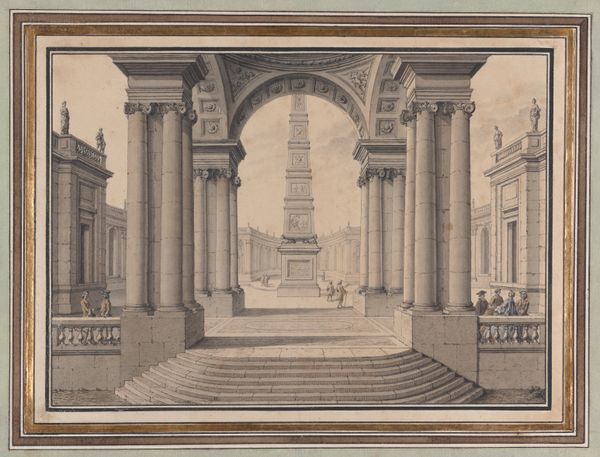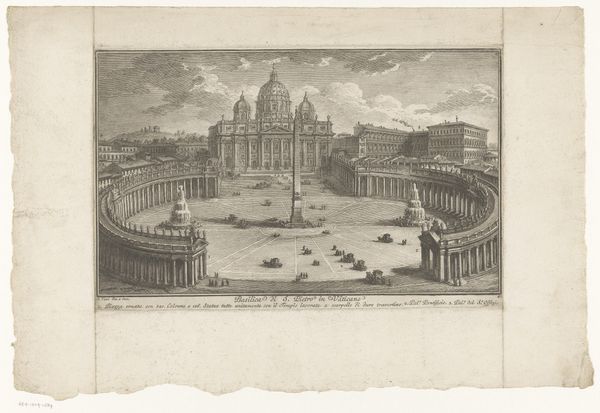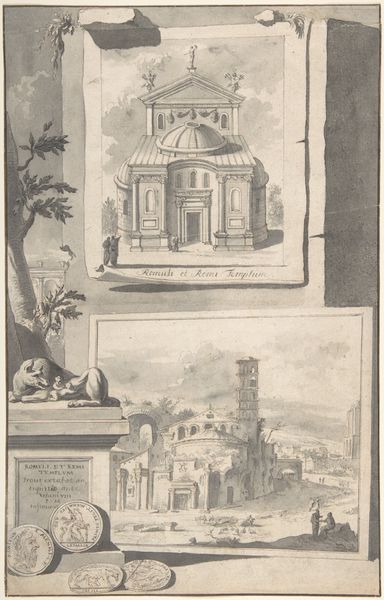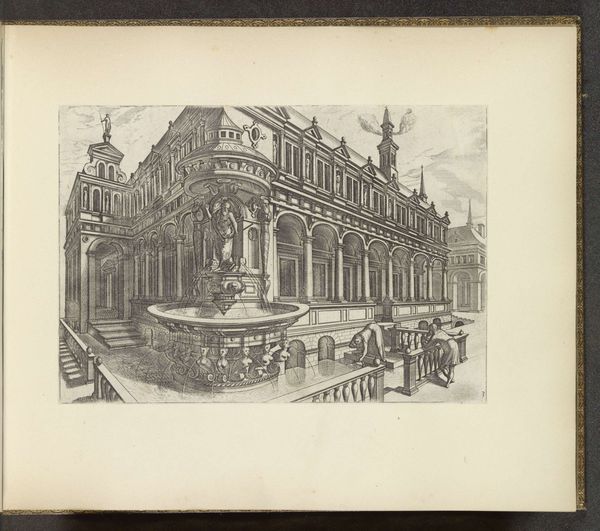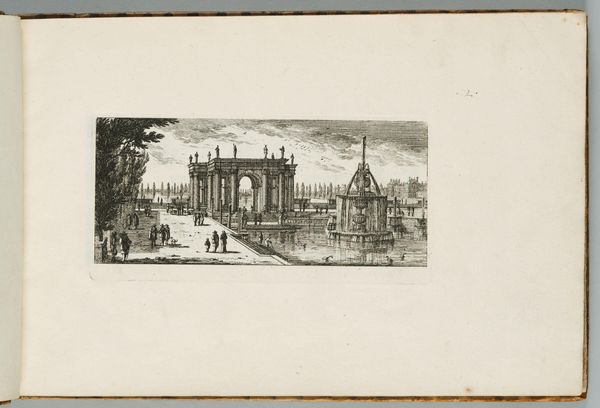
An Architectural Capriccio; a View Through a Great Arch with an Obelisk in a Piazza in the Middle Distance 1730 - 1778
0:00
0:00
drawing, coloured-pencil, print, architecture
#
drawing
#
coloured-pencil
#
baroque
# print
#
landscape
#
perspective
#
coloured pencil
#
cityscape
#
architecture
Dimensions: 8 1/4 x 11 in. (20.9 x 28.0 cm)
Copyright: Public Domain
Curator: Let’s take a look at "An Architectural Capriccio; a View Through a Great Arch with an Obelisk in a Piazza in the Middle Distance," a piece created by Charles Michel Ange Challe between 1730 and 1778. Editor: The scale and depth are striking—almost dreamlike. There’s something very evocative about the interplay of light and shadow defining these monumental structures. Curator: Exactly. Challe employs colored pencil here, a choice which itself invites exploration. In the 18th century, drawings were preliminary tools, and to that point this “capriccio” presents an imagined, idealized space rather than a precise record. Consider the social role of the draftsman within the court. Editor: Yes, the materiality reflects a time of courtly patronage, but beyond the architectural representation, one recognizes the social power imbued within these monuments. I see themes of spectacle and control being presented. The figures below are dwarfed. Curator: Indeed, that contrast in scale subtly enforces an ideological message—power and permanence celebrated through grandiose construction and a corresponding labor. He's showcasing his technical prowess in perspective and architectural design while serving the aspirations of the ruling elite. Editor: Absolutely. How fascinating that an artistic rendering simultaneously represents status while influencing cultural attitudes. Even this choice to represent Baroque ideals instead of, say, Neoclassical ones, sends a subtle political message in the language of design. Curator: I agree. It speaks volumes about what values were deemed desirable and how this idealized vista, using print and drawing, acted as both record and aspiration. The lines feel loose and almost unconcerned with a perfect replica. Editor: It begs us to look critically at what that aspiration really entails—the narrative that grand architecture weaves, for those who commissioned it and those who labor in its shadow. It prompts me to think what are the deeper social forces shaping aesthetic choices of the time. Curator: It’s true; beyond a beautiful artifact, it shows the ways that art creation is inherently linked to power structures. Editor: Right, a window into the layered meanings behind even the seemingly simple choice of medium, in colored pencil, depicting towering architecture. It holds stories beyond the surface.
Comments
No comments
Be the first to comment and join the conversation on the ultimate creative platform.
